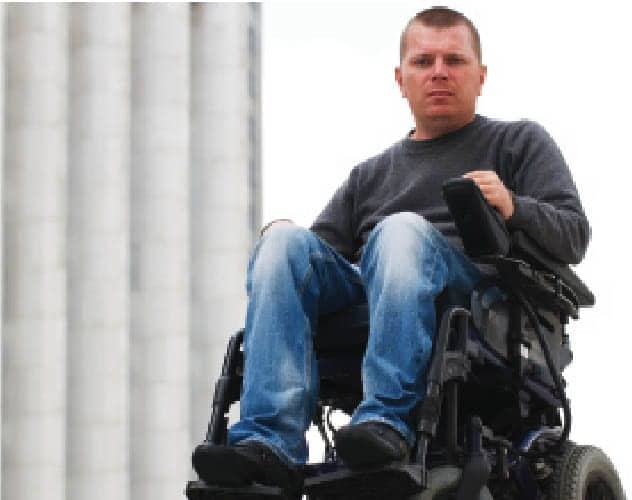Part 2 of a 2-part update of mobility technologies in 2014.
by Frank Long, Editorial Director, Rehab Management
Technology doesn’t sit still for long in the power mobility device arena, as industry engineers deliver refinements that continually expand the possibilities for users. This evolution has remained steady, with several key developments offering significant improvement to the power wheelchair user’s experience and function, according to Patricia Dworak, OTR/L, ATP, Wheelchair Program, Good Shepherd Rehabilitation Hospital, Allentown, Pa,
“With regard to power wheelchairs in general, mid- and front-wheel drive wheelchairs continue to be most popular due to their ability to perform in a variety of indoor and outdoor environments,” Dworak says. Advances that that benefit users who have limited functional ability have also been on the rise. Significant developments in this area include those that help users operate their devices with greater ease and efficiency.
Among the highlights Dworak considers noteworthy are 4-way switches, single switch scanning, mini joysticks, easy-touch switches, and chin booms with joysticks.
“There has also been improvement in the ability to achieve interfacing between wheelchair users and access to social media in the utilization of Bluetooth and keyboard access via new joystick technology,” Dworak says. “There are continual improvements in environmental controls so that users can operate their televisions, phones, lights, opening of doors, etc, directly through the joystick or alternative wheelchair control,” she notes.
High tech options have not been the only marquee performers. Dworak says innovations associated with computerized molded seating systems for users who have significant postural deformities have also positively affected the user experience and function. Other significant developments include improved versatility, on-board programming availability, and slim fit design with regard to head array systems.
“There has also been improvement in the ease of adjustment of positioning components on-chair, and the ability for the ease of adding components as the user’s abilities change, allowing more efficient accommodation for these changes,” Dworak says.
STANDING SYSTEMS REACH FOR HIGHER LEVELS OF HEALTH
The evolution of standing systems may not currently move at the pace of power wheelchairs, but one trend that has taken hold among these devices, according to Erin Neuland, PT, DPT, Physical Therapist II at The International Center for Spinal Cord Injury, Kennedy Krieger Institute, Baltimore, is an increase in the options an individual has for getting into standing.
Neuland says some models now are able to change between sit-to-stand and supine options, based on what is best for the individual user. And, she adds, “Some manufacturers are also trying to make the size of standers more manageable for home and school environments.”
One of the most beneficial characteristics associated with standing, according to Neuland, is dynamic standing. “It has been shown in the literature that dynamic movement enhances the effectiveness of bone health with standing,” Neuland says. “The human body is designed to be upright. Our bones, muscles, organs, and nervous system function optimally when either walking or standing. Literature is showing that early upright mobility is greatly impacting outcomes in individuals in therapy.”
This, according to Neuland, promotes bone health, improves respiratory function, improves bowel and bladder function, and decreases risk of contractures. She adds that standers also allow the opportunity for trunk, head, and lower extremity strengthening. All of which, Neuland says, help stave off secondary effects of immobility.
Devices designed to offer multiple functions such as seated transfers, gait training, and sit-to-stand have also advanced the utility of standing technology, as has development of the prone stander. In her book, Assistive Devices, author Mary Bolton, PT, highlights the usefulness of prone standers among children who require posture support or are unable to support themselves on their arms, as well as those who are unable to use a walking device because of limited cognitive ability.
Bolton notes that a prone stander can offer benefits to those who require greater extension strength—including head control and arm weight-bearing facilitation—and who are able to actively engage in standing. Bolton states that though prone standers have good utility, they require measuring to fit the child. She recommends a prone stander be on hand at the evaluation so the child’s response to the device may be observed. RM
Frank Long is Editorial Director of Rehab Management. For more information, contact [email protected]






